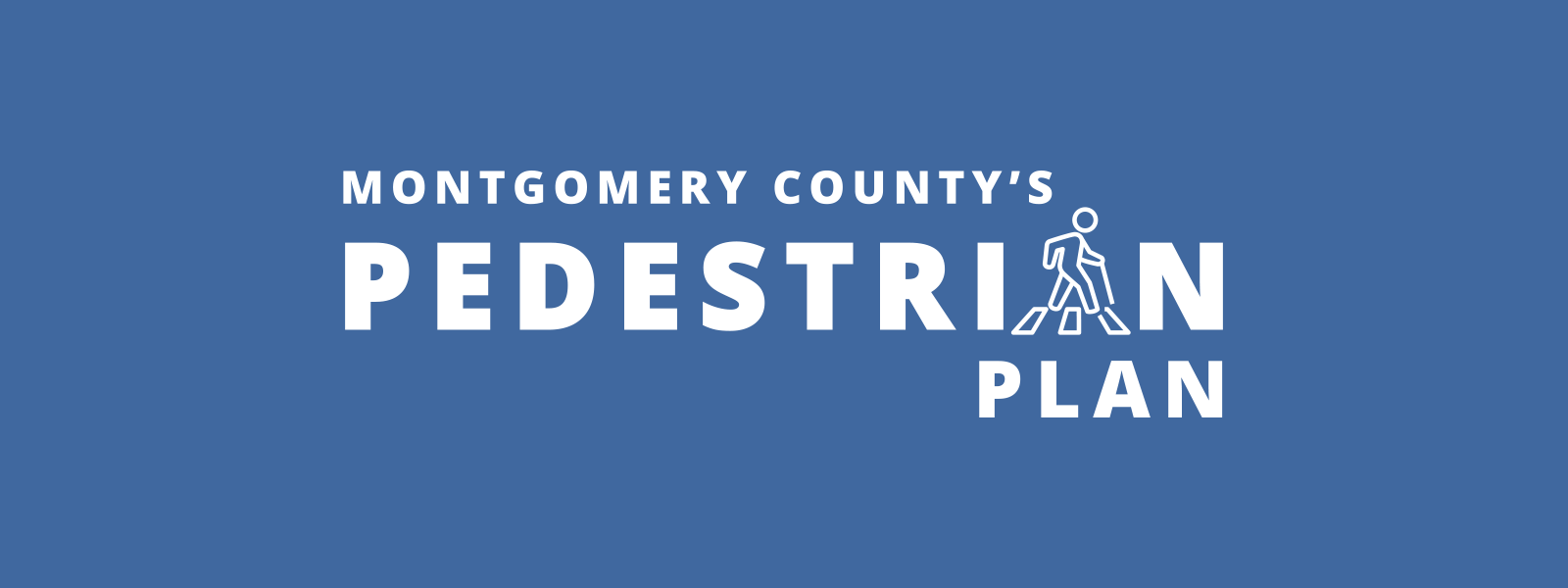
Paradigm-shifting plan to foster safer, more comfortable, and more accessible pedestrian conditions countywide heads to County Council for review
WHEATON, MD – The Montgomery County Planning Board, part of The Maryland-National Capital Park and Planning Commission (M-NCPPC), approved the Montgomery County Planning Department’s draft Pedestrian Master Plan, the county’s first comprehensive master plan to improve the pedestrian experience countywide. The Planning Board voted to approve the plan’s Planning Board Draft and transmit it to the County Council and the County Executive for public review and final County Council approval. There will be an opportunity for more public comment on the plan with the County Council’s public hearing and work session review.
Read the Planning Board Draft of the Pedestrian Master Plan.
The Pedestrian Master Plan documents the pedestrian experience in Montgomery County today and makes recommendations in line with national and international best practices to improve that experience. The approval of the Planning Board Draft is the culmination of more than three years of Montgomery Planning research, analysis, data collection, expert collaboration, equitable community engagement and feedback, public hearings and presentations, as well as input and direction from Planning Board members during a series of live-streamed work sessions this spring.
“The Pedestrian Master Plan is a groundbreaking document that will guide decision makers in the years to come on how to make walking or rolling in Montgomery County safer, less stressful, and more enjoyable,” said Planning Board Chair Jeff Zyontz. “This is a bodacious plan that provides data-driven recommendations, which when implemented will create a future environment in Montgomery County where walking and rolling is easier and more comfortable to do regardless of one’s age or ability.”
“An important element of the county’s Vision Zero Action Plan and Climate Action Plan, the Pedestrian Master Plan is the first countywide master plan that puts Thrive Montgomery 2050’s vision of walkable communities into action,” said Acting Planning Director Tanya Stern. “Safe and appealing pedestrian networks that are equitably accessible and environmentally sustainable help to create ‘Complete Communities’ that offer more ways for all residents to travel throughout the county safely without using a vehicle all the time.”
“The plan’s recommended actions help the county continue its pivot toward embracing walkability, prioritizing safety, connecting communities, and reimagining what a suburb can be,” said project lead Eli Glazier. “Our innovative data collection and community engagement approaches helped develop recommendations that not only call for enhancing the built pedestrian environment but also addressing the policies, practices, laws, and regulations that allow for walking and rolling to flourish.”
For more information and examples on how the plan seeks to improve the pedestrian experience in Montgomery County, check out Montgomery Planning’s Pedestrian Master Plan YouTube playlist.
Following transmission to the County Council, the next steps for the Pedestrian Master Plan include a County Council public hearing, where the community will be invited to testify, and then a series of committee and full Council work sessions in the fall.
More About the Plan
Pedestrian comfort while walking or rolling (with a mobility device) in the county can vary greatly depending on where you are. Some roads and intersections are safer and more accessible than others. To encourage more walking and to ensure a less stressful traveling experience, Montgomery Planning initiated the Pedestrian Master Plan to address the issues pedestrians face in Montgomery County.
Since work began on the Pedestrian Master Plan in fall 2019, Montgomery Planning has held numerous in-person and virtual community engagement events and activities, designed, and distributed a survey to 60,000 households, and collected and analyzed commute and crash data to have a deeper understanding of the issues important to pedestrians of all backgrounds, ages, and types of mobility.
The Pedestrian Master Plan provides detailed, actionable recommendations to improve the pedestrian experience. The plan’s vision is supported by four goals:
- Increase walking rates and pedestrian satisfaction
- Create a comfortable, connected, convenient pedestrian network
- Enhance pedestrian safety
- Build an equitable and just pedestrian network
Download a Pedestrian Master Plan pamphlet to print out and share and visit montgomeryplanning.org/walkinghere for more information.
Draft Plan Recommendations
The draft Pedestrian Master Plan includes detailed recommendations focusing on how the county can systemically improve the pedestrian experience.
Design, Policy, and Programming recommendations will change how pedestrian amenities are designed and constructed, update the policies that guide transportation engineering in the county, and leverage opportunities for more robust traffic safety education and policy change at the state level. Examples include longer crosswalk times for residents of all ages and abilities, sidewalks that are more accessible, especially for people with mobility issues, updated lighting standards, exploring taking county control of certain state highways, and reimagining Safe Routes to School programming.
Pedestrian and Bicycle Project Prioritization recommendations identify where pedestrian and bicycle capital improvement projects should be prioritized countywide, based on equity, comfortable access, safety, and other metrics.
Pedestrian Shortcut Identification recommendations specify locations where public or private investment could shorten pedestrian trips and make the overall pedestrian network more accessible by improving dirt paths and other informal connections that have developed over time.
Country Sidepath Identification recommendations indicate where sidepaths—shared pedestrian and bicycle pathways—should be built along roadways in the more rural parts of the county, in line with guidance in the Complete Streets Design Guide.
Complete Streets Design Guide Area Type Classification recommendations advance the transition to new road classifications to ensure that as streets are reconstructed in the years ahead, they will be more pedestrian-friendly.